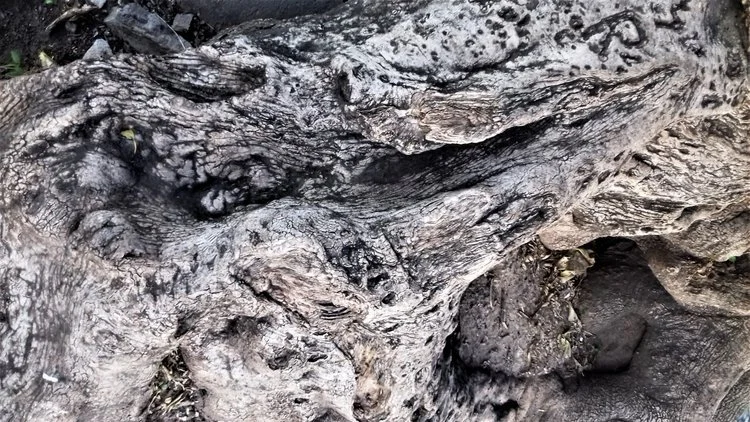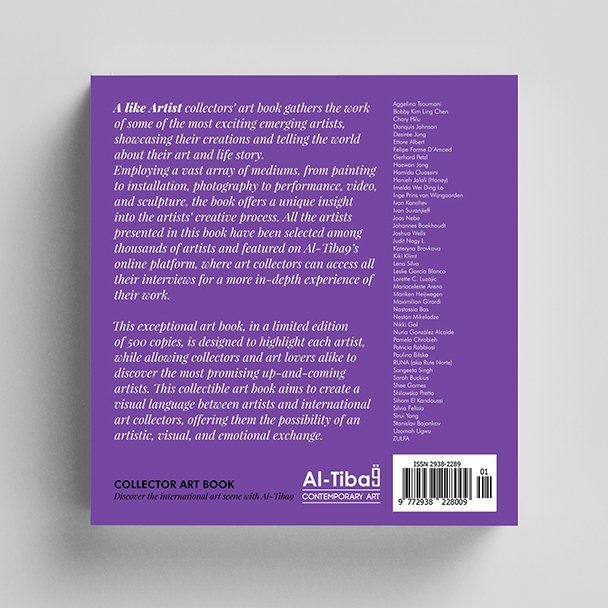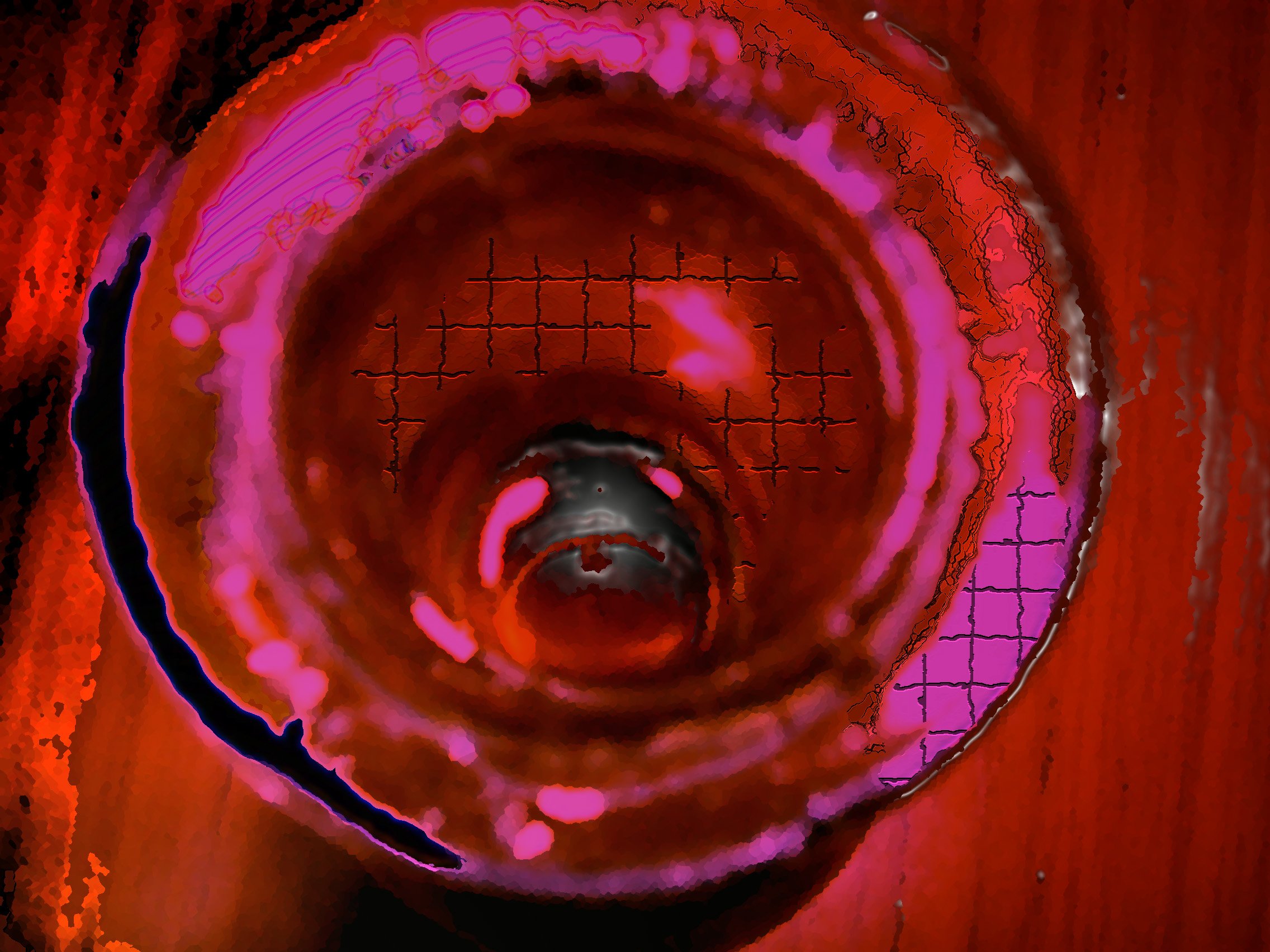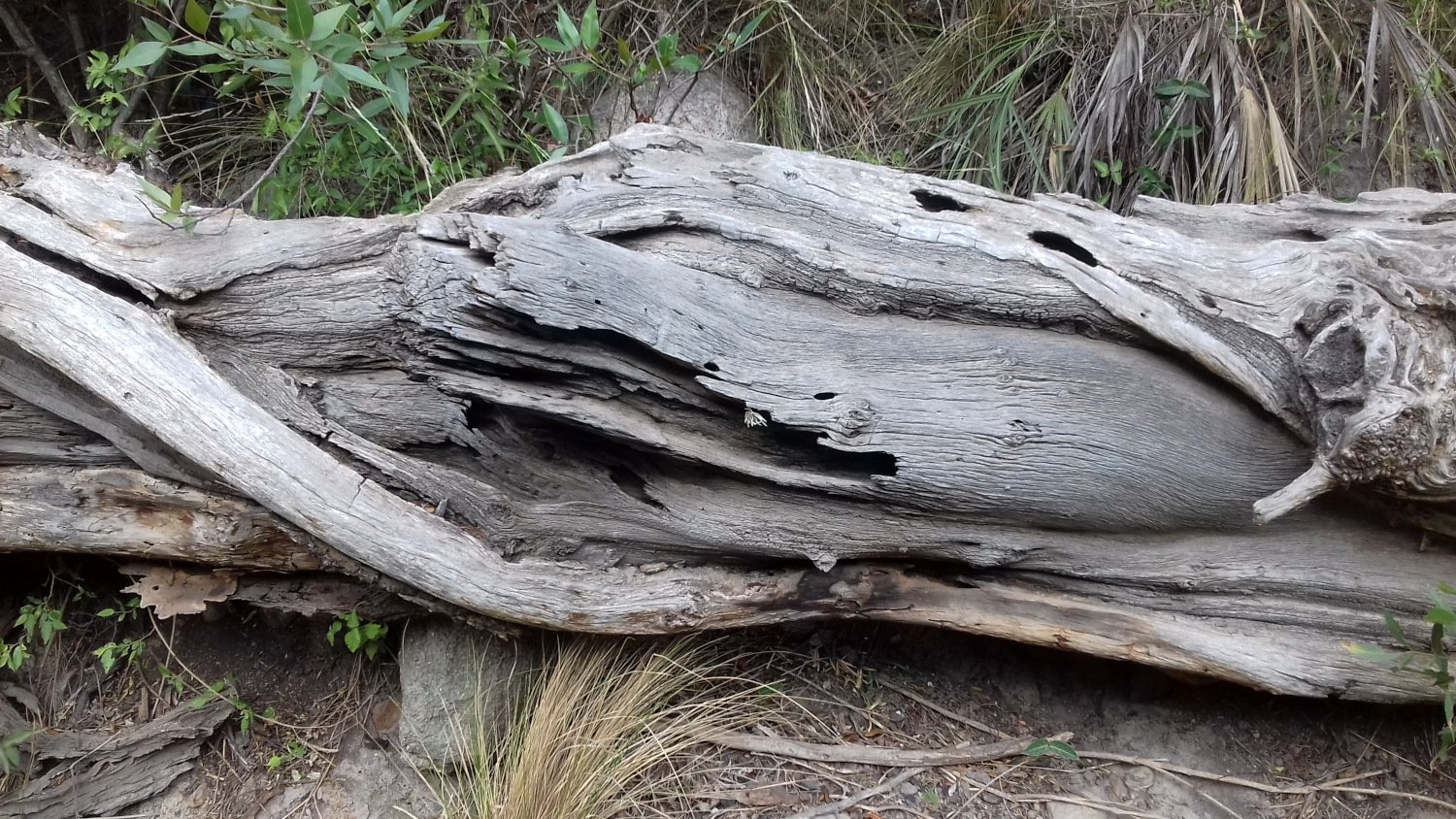INTERVIEW | Patricia Rabbiosi
10 Questions with Patricia Rabbiosi
Patricia Rabbiosi (b. 1966, Argentina) has a Bachelor's degree in Musical Composition and Teaching Music Composition from the Rosario National University- Faculty of Humanities and Arts. She is a composer formed in Contemporary Music, with experience in music design for films and theater performances, and a music teacher at the Drama School and Film and Television School (since 2001). Her works include Chamber and Electronic Music and sound design. She has participated with original music in several works by Artists from Argentina, premiering his works in theaters in Argentina, Mexico, and Spain.
She explores sound architecture and objects as source material in her music. Some of her pieces of work combine both her images and music. Her visual work is self-taught, exploring different techniques from real images, which are then digitally processed. Her other works include performances and interventions with social themes, such as animal rights and human trafficking for sexual exploitation.
Patricia Rabbiosi - Portrait
ARTIST STATEMENT
As an integral artist who explores the universes of sound and image, her interest is centered on the selection and the materials processes to apply them to the pieces of work. The focus is mainly on the abstract, the symmetry, the noise, the textures, and the concrete forms. As regards her music, she works with virtual synthesizers and processed sounds. For the visual part, she starts with concrete images, which are then digitally processed. In this process, these images are re-signified by generating a new object or shape. She is especially interested in giving greater importance to the management of artistic resources than to software. She always considers that performance and interventions are the ideal media to show her work as well as virtual sites.
She loves photographing tree trunks, their textures, shapes, and surfaces, and her greatest wish is to be able to photograph trees from all over the planet and, through their images, share her message of respect for all species' lives and the connection between humans and Mother Nature. As part of this message, she is currently working on two projects "The Skin of the Earth", based on images of tree trunks which she interprets as part of the "skin" of Planet Earth, and "Project Nature", in which she composes naïve visual paintings with images of animals and plants.
BURNING CITY, Digitally processed photography, 115,15x50,41 cm, 2018 © Patricia Rabbiosi
Limited edition art collectors’ book
INTERVIEW
You are both a visual artist and a composer. Tell us a little bit about your background and how you first got interested in art.
I started studying Music (Classical Guitar) when I was around ten years old. From there and through Music, I connected with the rest of the Arts: Literature, Painting, Sculpture, Cinema, and Photography. At one time, I made small sculptures with stones and seashells, and at the same time, I wrote free poetry. Those were my first experiences outside the field of Music. After that, I became interested in digital image editing around 2007.
How would you define yourself as an artist nowadays? And how did your art evolve over the years?
Musical composition is the discipline where I trained artistically and from which I mastered extensively. However, I also explore the fields of image and performance broadly. Therefore I would define myself as a Multidisciplinary artist, although the term may no longer be widely used.
Regarding my evolution, I cannot separate my personal growth as a human being from the results in my works. In my opinion, the most important skills I can offer as an artist are my honesty and authenticity. Being able to tell myself, "this is what I do, and I want to show it" was the most important step, especially in the visual field. Hence, every time I am working on something authentically mine, that is what boosts my self-confidence.
CIRCLE, Digitally processed photography, 32,06x24,05 cm, 2019 © Patricia Rabbiosi
NUBES DE MARTE - MARS CLOUDS, Digitally processed photography, 64,77x36,97 cm, 2019 © Patricia Rabbiosi
You work with several different mediums, such as visual, photography, music, and performance. How do you choose which medium you work with, and how much does it influence the final result?
Both my musical and visual works are created with sound and image programs, respectively. Indeed, virtual synthesizers and sound mixers are used for musical works, and image editors for visuals.
Regarding this, I am interested in working with simple technology. I attach more importance to the knowledge of artistic resources than to software. The technological mediums are selected according to my ability to handle them.
I have never been too interested in having the latest update or program. I work the composition, harmony, texture, movement, and rhythm; that's all I look for in other artists too. I do not pursue perfection in terms of technology, but the final result always depends on myself being convinced that I could embody the idea. In this sense, I always thank my academic training that I received at University. There I learned that Art requires discipline and the ability to review the work, correct and often even start all over again.
Your work reminds me of Laurie Anderson for its mix of music, performance, electronic devices and visual art. Do you have any artist or role model you get inspired by?
It's an honor to hear the name of the great Laurie Anderson. Thank you for mentioning her in my interview! I don't have any artists I'm inspired by. But I do admire the work of artists like Meredith Monk or Björk very much and, of course, Laurie Anderson, in terms of the musical.
In my opinion, they are the three artists who have put a stamp on originality and identity. In particular, they opened new paths and gave us that new sonority that many of us were looking for. I remember "Dolmen Music" by Meredith Monk, "Venus as a Boy" by Björk, and "Born, never asked" by Laurie Anderson as the themes for which I began to follow them... years ago!!!
I love Drag Queen's art because of its gall, perfection, and courage. That's why this visual art attracts me the most. And I'm also fascinated by makeup and clothing design. Not to make them but to see them. Regarding visual artists, in painting, I am impressed by hyperrealism.
In other fields, I am very inspired by the great movement that has emerged to raise awareness about the relationship of humans with Nature. And in that direction, I'm creating my latest works, hoping to leave a positive imprint. As a vegan and Mother Nature lover, I'm always thinking about what I can "say" from what I do. And I wish that was my stamp from now on.
A DREAM IN AN OLD HOUSE, Digitally processed photography, 19,05x25,04 cm, 2019 © Patricia Rabbiosi
Your production is rather heterogeneous. What are the main themes behind your work?
For many years, I've done several artistic interventions in public places with local artists exposing the theme of human trafficking for sexual exploitation as well as participating in meetings in order to show this issue. I always believe that art is an important means of communicating this situation.
When I decided to change my way of living and became a vegan, my perception as a human being widespread; therefore, my artistic perception changed. The way I see it, we're only one specie living together with others as part of the wonders created by Nature. Therefore, Planet Earth gives us so much beauty to admire and above all, respect.
As a living soul, I feel a strong connection with nature: water, flowers, trees, and animals. All Nature is the most perfect, beautiful, and sublime work of art.
In this sense, I choose tree trunks to photograph as a preferred theme because they fascinate me. Its surfaces, textures, colors, and shapes are always captivated. One of my dreams is to travel around the world photographing them. I am also deeply interested in abstract art and symmetry, the manipulation of colors, shapes, and illumination.
What aspect of your work do you pay particular attention to?
Many of my works start from photographs which I subsequently process with the editing program. I manipulate that original shape until I obtain another one that can preserve something or be totally transformed. Some of the images are everyday objects. I find that very interesting.
Where do you find inspiration for your work, and what is your creative process like?
I am inspired to reach as many people as I can with my work and meet other artists with whom to exchange experiences. I am also excited when new challenges arise as invitations to exhibit and show my works and enter the universe of the technological means of current art and NFT.
As for the creative process, I can start with a photograph that I edit until I get the image I want. But I also use graphics images from the editing programs that I modify until they lose their original shape and new shapes, colors, dimensions, textures, and lights appear. I carry out a great exploration in editing until I reach the final result.
I like to work with everyday objects to re-mean them and also with the symmetry of some forms of architecture. When I work with the photographs of tree trunks, I do not transform them very much, just a few adjustments in brightness and contrast to highlight the surface, the texture, and the form.
With respect to my musical works, the creative process is complex too. First, I listen to the sound banks of the virtual synthesizers, and they usually inspire me with melodies or rhythms from which I build the work. If I work with acoustic instruments like guitar, voice, clarinet, string quartet, or chamber orchestra, I focus on melodies and texture. What interested me the most, not only in the visual but also in the musical, is that the listener and the watcher can capture the essence easily.
STILL ALIVE, Photography, 115,15x64,77 cm, 2021 © Patricia Rabbiosi
THE SKIN OF THE EARTH (From the series The Skin of the Earth), Photography, 115,15x64,77 cm, 2019 © Patricia Rabbiosi
You already have a long career and have experienced different approaches to art throughout the years. Do you find any positive change in the approach people have to art now, compared to past years?
Technology always fosters the generation of new ways of making art and in this sense, today there is an explosion of technological resources that have made new genres and artists flourish. I consider there's been a remarkable increase in new artistic genres that have appeared, which allows many more people to generate new proposals that before maybe been limited to very specific circles. I also accept as true that the Internet has changed everything. For generations born without the internet, those who are now called digital immigrants, this is remarkable because it opened up a new world of opportunities and knowledge that we can access simply from a device.
I just want to remind you that as an artist born and still living in Argentina, I experience peculiarities beyond the positive changes that have occurred in the approach of people to art (whether public or artists). And it is the difference with the countries where making art is part of everyday life and artists have many more spaces and even economic support because there is a market for art. However, in countries like Argentina, the art circuits are very small and much more limited. It is an aspect that should not be ignored because it influences the motivation to make art as a life project. But all this also relates to virtuality because today you can show and even sell a work without having been physically exposed in a room.
That is to say, new art circulation circuits are opened. And once again I mention the Internet because thanks to this resource, I have the opportunity to do this interview, which I find very inspiring and I feel recognized as an artist.
Equally, this question would require a very long answer, since I reflect upon the current situation of art in general and many aspects that perhaps I do not publically share.
But I want to highlight the positive ones, for example, some artistic movements that reach millions of people with messages on topics such as the environment, animal rights, and contact with our essence as spiritual beings. There are many artists who paint beings from other worlds with whom they have contacted and showed it to people, that's wonderful!!
And there is an excerpt from the art that continues to attract me a lot: conceptual art.
HUG, Photography, 43,99x72,32 cm, 2018 © Patricia Rabbiosi
Are you working on any new projects right now? Any exciting project or collaboration you would like to share with our readers?
I am currently working on two artistic projects. One of them is "My Tree Skin" (Mi Piel de Árbol), with pictures of tree trunks. The other one is "An innocent look on Nature," in which I show naive images of Nature that allow me to expose my respect for all life's forms. Climate change, as well as animals' rights to live free, are all part of this project. The main idea is that Nature is not a resource but a generous gift that we must care for and love. Last but not least, we are going to record one of my works for classical guitar with a renowned Argentinian guitarist.
And lastly, what is one piece of advice you would like to give to beginning artists?
I'm convinced that today we are undergoing what I would call a great global exploration that opens new ways of making art. This has generated new infinite artistic genres. As a result of that, I think the notion of art has evolved.
To those who are beginning to explore that marvelous universe, I would say that the sound, the light, and the color are signs that retain information that's essential that artists must know in order to achieve the final outcome. I highly recommend artists should have some theoretical knowledge on basic concepts such as form, lighting, texture, composition, rhythm, harmony, etc.
But today, there are also many genres in which the concepts that prevail are others, some that I do not know fully. In these genres, I am one of those who ask for advice from the artists who dominate them. This exchange is extremely enriching, and I am excited to broaden my own horizons.
I think the best advice I'd like to give is that every artist has to find their own way of making art.


























